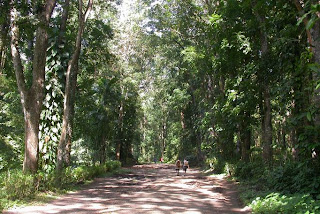
The focus of the two media networks on team and individual expeditions built up a hype which may have distorted the picture of atypical pinoy mountaineering.
It is a race.
It is expensive and can cost you an arm and a leg.
Guides are vital and are key to the expedition.
Anyone with resource can make it to the top.
Success is met with recognition, failure with death.
Chiqui Roa-Puno's talk show "In My Life" aired over ANC 2 June featured mountaineers from UPM, Pilipinas Sierra, OCMI and AMCI bounded what thepinoy mountaineer is. The guests, Bernice from UPM, Fred from Pilipinas Sierra , Jay from AMCI and Louie M. from Ortigas CMI talking from their personalexperiences revealed the formal and informal values that guide them and the distinct culture that appear to bind them even if they do notknow each other.
A basic mountaineering course is a necessary foundation before onejoins the group to a climb.Harness is for scaling walls and is not necessarily brought inregular climbs.
Shoes with good traction and hard sole arenecessary. Mojos while popularly used are for certain terrains.
A backpack contains the essential kits to survive a climb: a minikitchen to prepare food, a tent for shelter, food and water provisionfor the body fuel.
It may not necessarily be huge.Equipment can be shared.
Women do not necessarily get special attention. They are treated asequals. But inarte women (also men) are despised.
You are responsible for your own self and should not pose as a burdento the rest of the group.
Young and old do climb (from the teens to the 70's).
A climb requires preparation degree of which depends on the type ofmountain.
 Deeper relationships develop as one sees the core of each other goingthrough difficult and fun moments.Some groups abort their climbs should a member falls out during thetrek. There is such a thing as a point of no return where it is safer to complete the expedition than to descend.
Deeper relationships develop as one sees the core of each other goingthrough difficult and fun moments.Some groups abort their climbs should a member falls out during thetrek. There is such a thing as a point of no return where it is safer to complete the expedition than to descend.It is more difficult to descend than to ascend. (The guests failedto mention through that there is less weight descending and one'stired body recovers from a sound sleep.)
Snakes are not a threat if you don't provoke them but the mosquitoesare a bigger danger.
The highest is not necessarily the most difficult.
The host was apparently awed by the positive values she spotted fromthe mountaineers. If she had some climbing experience prior to theinterview, it would have pushed her to ask, "Is the hardship duringthe trek all worth it? What happens at the campsite? Is therereally a race to the top? What roles do the trekkers play in a groupclimb? Is there really rivalry? What drives you from climbing overand over?" An insight to these queries would have bounded furtherwhat the pinoy mountaineer is.
The interesting talk was capped with the two sets of guests declaringthat the successful ascent to the top of the world and their safedescent made the pinoy mountaineer proud. It was a validation thoughlate that the pinoy with resources can. There is a pool of pinoymountaineers with the strength, skills and attitude who too can makeit to the summit of the world.May 2006 opened the possibility that the summit of Mt. Everest is notan elusive dream for a serious Filipino mountaineer. Thank you Leo,Erwin and Romy for showing us. You gave us permission for puttingyour dreams in ours too.
tochs 5June06
No comments:
Post a Comment